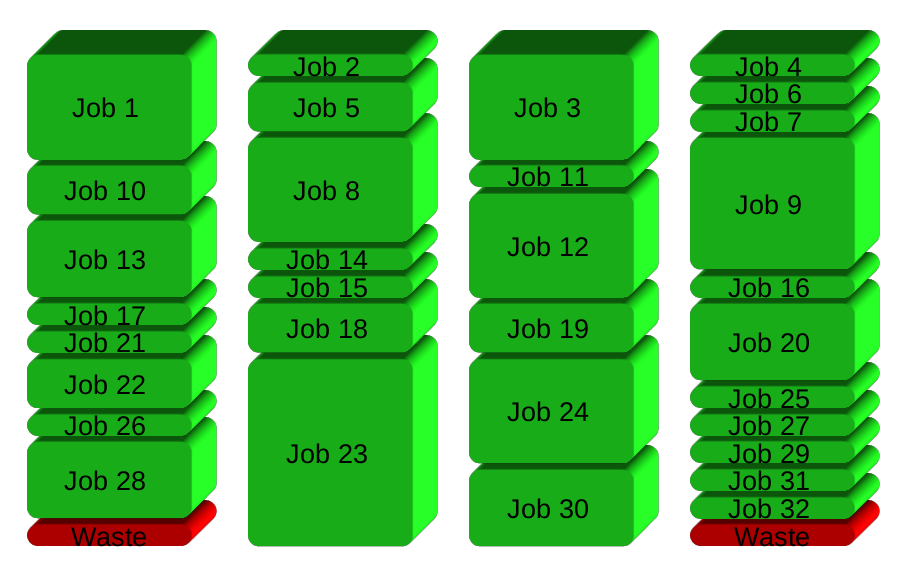Reputation: 3475
how to ping each ip in a file?
I have a file named "ips" containing all ips I need to ping. In order to ping those IPs, I use the following code:
cat ips|xargs ping -c 2
but the console show me the usage of ping, I don't know how to do it correctly. I'm using Mac os
Upvotes: 8
Views: 14794
Answers (7)

Reputation: 6341
As suggested by @Lupus you can use "fping", but the output is not human friendly - it will scroll out of your screen in few seconds laving you with no trace as of what is going on. To address this I've just released ping-xray. I tried to make it as visual as possible under ascii terminal plus it creates CSV logs with exact millisecond resolution for all targets.
Hope you'll find it helpful.
Upvotes: 0

Reputation: 33685
With GNU Parallel you would do:
parallel -j0 ping -c 2 {} :::: ips
This will run as many jobs in parallel as you have ips or processes.
It also makes sure the output from different jobs are not mixed together, so if you use the output you are guaranteed that you will not get half-a-line from two different jobs.
GNU Parallel is a general parallelizer and makes is easy to run jobs in parallel on the same machine or on multiple machines you have ssh access to.
If you have 32 different jobs you want to run on 4 CPUs, a straight forward way to parallelize is to run 8 jobs on each CPU:

GNU Parallel instead spawns a new process when one finishes - keeping the CPUs active and thus saving time:

Installation
If GNU Parallel is not packaged for your distribution, you can do a personal installation, which does not require root access. It can be done in 10 seconds by doing this:
(wget -O - pi.dk/3 || curl pi.dk/3/ || fetch -o - http://pi.dk/3) | bash
For other installation options see http://git.savannah.gnu.org/cgit/parallel.git/tree/README
Learn more
See more examples: http://www.gnu.org/software/parallel/man.html
Watch the intro videos: https://www.youtube.com/playlist?list=PL284C9FF2488BC6D1
Walk through the tutorial: http://www.gnu.org/software/parallel/parallel_tutorial.html
Sign up for the email list to get support: https://lists.gnu.org/mailman/listinfo/parallel
Upvotes: 1
Reputation: 816
You could use fping. It also does that in parallel and has script friendly output.
$ cat ips | xargs fping -q -C 3
10.xx.xx.xx : 201.39 203.62 200.77
10.xx.xx.xx : 288.10 287.25 288.02
10.xx.xx.xx : 187.62 187.86 188.69
...
Upvotes: 1

Reputation: 85785
You need to use the option -n1 with xargs to pass one IP at time as ping doesn't support multiple IPs:
$ cat ips | xargs -n1 ping -c 2
Demo:
$ cat ips
127.0.0.1
google.com
bbc.co.uk
$ cat ips | xargs echo ping -c 2
ping -c 2 127.0.0.1 google.com bbc.co.uk
$ cat ips | xargs -n1 echo ping -c 2
ping -c 2 127.0.0.1
ping -c 2 google.com
ping -c 2 bbc.co.uk
# Drop the UUOC and redirect the input
$ xargs -n1 echo ping -c 2 < ips
ping -c 2 127.0.0.1
ping -c 2 google.com
ping -c 2 bbc.co.uk
Upvotes: 18
Reputation: 8802
With ip or hostname in each line of ips file:
( while read ip; do ping -c 2 $ip; done ) < ips
You can also change timeout, with -W flag, so if some hosts isn'up, it wont lock your script for too much time. Also -q for quiet output is useful in this case.
( while read ip; do ping -c1 -W1 -q $ip; done ) < ips
Upvotes: 2
Reputation: 27528
If the file is 1 ip per line (and it's not overly large), you can do it with a for loop:
for ip in $(cat ips); do
ping -c 2 $ip;
done
Upvotes: 1
Related Questions
- ping multiple ip and save it to one file in ansible
- Linux bash script that pings multiple IP addresses from a file
- ping several times and get return status for each ip
- How to ping several hosts at the same time (bash) linux
- ping specified ip ranges to txt at one time (not one after one) - is it possible?
- Bash ping output in csv format
- ping a given list of servers
- Ping hundreds in one script
- BASH- trouble pinging from text file lines
- Modify shell script to monitor/ping multiple ip addresses

